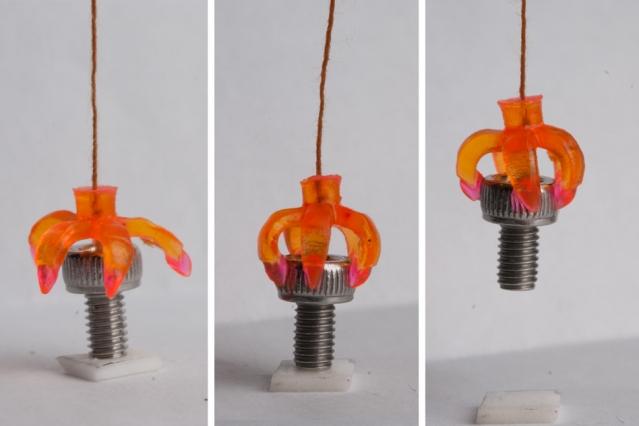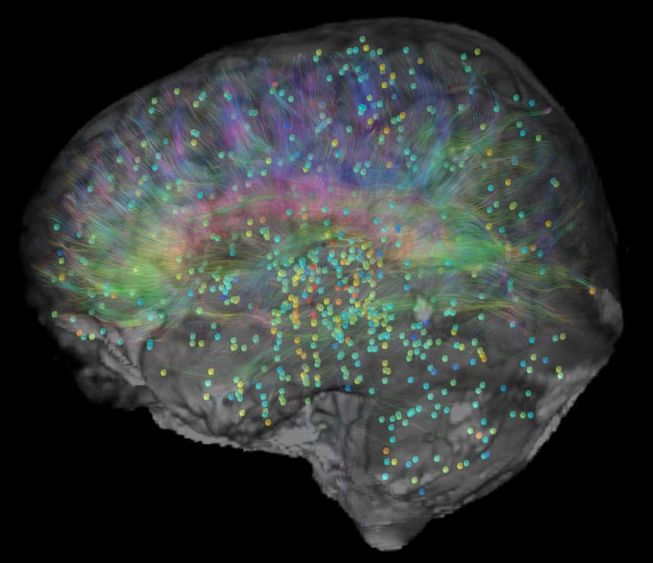Page 10915
Aug 27, 2016
Researchers Create Microstereolithography for 4D Printing, Potential for Impacts in Medical, Solar & More
Posted by Karen Hurst in categories: 3D printing, 4D printing, augmented reality, biotech/medical
 Technology can be confusing when it begins moving at such an accelerated rate, perfectly exemplified by the 3D industry, and encompassing all that goes with it, from 3D scanning to 3D printing and then peripheral industries that are often connected too such as augmented and virtual realities. We’ve barely digested all the stunning innovations making impacts in so many different sectors, from 3D printed medical models that allow for more complex surgeries, to 3D printed parts for a suspension system that make racing bikes go faster, all the way to incredible toys for your kids using augmented reality systems.
Technology can be confusing when it begins moving at such an accelerated rate, perfectly exemplified by the 3D industry, and encompassing all that goes with it, from 3D scanning to 3D printing and then peripheral industries that are often connected too such as augmented and virtual realities. We’ve barely digested all the stunning innovations making impacts in so many different sectors, from 3D printed medical models that allow for more complex surgeries, to 3D printed parts for a suspension system that make racing bikes go faster, all the way to incredible toys for your kids using augmented reality systems.
Yet, while work is definitely just beginning in the 3D realm, scientists have already begun exploring a range of uses for 4D technology that should prove offer impacts in just as many applications, from the medical field to electronics and far beyond. It might seem like a lot all at once, but the two technologies definitely work together, with the 4D emphasis adding a more intuitive, smart angle to fabrication.
As we’ve seen in other studies using the application of heat, it would appear that 3D printed objects can be treated or manipulated to cause shapes to morph according to their environment, as well as remembering their previous state and going back to it in the appropriate conditions. Now, teams from both MIT and the Singapore University of Technology and Design (SUTD) are employing light in their endeavors to create smart structures. They’ve had good success too, if the amount of torturing they’ve put these materials through is any indication. According to the engineers, they’ve twisted, bent, and stretched everything from small coils to flowers fabricated out of numerous materials, and even a replica they made of the Eiffel tower. As is the case with structures being pushed into the 4D realm, all of the above materials reverted.
Aug 27, 2016
Going beyond 3D printing to add a new dimension for additive manufacturing
Posted by Karen Hurst in categories: 3D printing, materials

A team of Lawrence Livermore National Laboratory researchers has demonstrated the 3D printing of shape-shifting structures that can fold or unfold to reshape themselves when exposed to heat or electricity. The micro-architected structures were fabricated from a conductive, environmentally responsive polymer ink developed at the Lab.
In an article published recently by the journal Scientific Reports (link is external), Lab scientists and engineers revealed a strategy for creating boxes, spirals and spheres from shape memory polymers (SMPs), bio-based “smart” materials that exhibit shape-changes when resistively heated or when exposed to the appropriate temperature.
Continue reading “Going beyond 3D printing to add a new dimension for additive manufacturing” »
Aug 27, 2016
As brain maps proliferate, scientists aim to sync them up
Posted by Karen Hurst in categories: biotech/medical, neuroscience
Brain maps seem to come out in rapid succession these days. They take various forms: a map for word concepts, a map of individual cells’ activity, a map based on the organ’s physical contours.
What they share in common is the aspiration to take the lumpy mass of the brain and categorize it, somehow, into useable areas — not unlike the textbook brain images with their colored denotations of “occipital lobe” and “frontal cortex.”
But these maps often come along with a problem: They may not sync up with the other maps. Now a group of scientists have managed to sync up two of the most commonly used types of brain maps — for gene expression and brain structure — and they’re releasing their methods to any and all in the scientific community.
Aug 27, 2016
Brain implants would make ‘The Matrix’ come to life
Posted by Karen Hurst in categories: cyborgs, neuroscience
Los Angeles-based tech company Kernel is working on a ‘memory prosthesis’ to be placed in the hippocampus.
Aug 27, 2016
How quantum computers will change the world of hacking
Posted by Karen Hurst in categories: cybercrime/malcode, encryption, information science, quantum physics
There is a computing revolution coming, although nobody knows exactly when. What are known as “quantum computers” will be substantially more powerful than the devices we use today, capable of performing many types of computation that are impossible on modern machines.
But while faster computers are usually welcome, there are some computing operations that we currently rely on being hard (or slow) to perform.
Specifically, we rely on the fact that there are some codes that computers can’t break – or at least it would take them too long to break to be practical. Encryption algorithms scramble data into a form that renders it unintelligible to anyone that does not possess the necessary decryption key (normally a long string of random numbers).
Continue reading “How quantum computers will change the world of hacking” »
Aug 27, 2016
Is Anything Truly Random or Is There an Underlying Order to Everything?
Posted by Karen Hurst in categories: ethics, quantum physics
A discussion that I have had often.
In Beyond Science, Epoch Times explores research and accounts related to phenomena and theories that challenge our current knowledge. We delve into ideas that stimulate the imagination and open up new possibilities. Share your thoughts with us on these sometimes controversial topics in the comments section below.
The Dutch philosopher Baruch Spinoza (1632–1677) wrote in “Ethics I”: “Nothing in Nature is random. … A thing appears random only through the incompleteness of our knowledge.”
Continue reading “Is Anything Truly Random or Is There an Underlying Order to Everything?” »
Aug 27, 2016
Revealed: Pentagon’s Plan to Defeat Russian and Chinese Radar With A.I
Posted by Karen Hurst in categories: military, robotics/AI
Hmmmm.
The Pentagon’s Defense Advanced Research Projects Agency (DARPA) is working on a new generation of electronic warfare systems that are based on artificial intelligence (A.I.). If the program were to prove a success, the new A.I.-driven systems would provide the United States military a way to counter evermore-capable Russian and Chinese radars.
“One of our programs at DARPA is taking a whole new approach to this problem, this is an effort we refer to as cognitive electronic warfare,” DARPA director, Dr. Arati Prabhakar, told the House Armed Services Committee’s Subcommittee on Emerging Threats and Capabilities on February 24. “We’re using artificial intelligence to learn in real-time what the adversaries’ radar is doing and then on-the-fly create a new jamming profile. That whole process of sensing, learning and adapting is going on continually.”
Continue reading “Revealed: Pentagon’s Plan to Defeat Russian and Chinese Radar With A.I” »
Aug 27, 2016
The US Air Force Wants to Plasma Bomb The Ionosphere To Improve Radio Signals
Posted by Karen Hurst in category: military
US Air Force wishes to artificially increase plasma density in the ionosphere so that we can have better radio reception.
Aug 27, 2016
HAARP Opens Doors To Conspiracy Theorists To Prove “It Is Not Capable Of Mind Control”
Posted by Karen Hurst in categories: habitats, neuroscience
Did anyone from Lifeboat attend today’s HAARP’s open house in Alaska today?
HAARP, aka the High Frequency Active Auroral Research Program, lives out a quiet existence in the middle of the Alaskan wilderness. But for one reason or another, this ionospheric research facility has become the favorite scratching post for conspiracy theorists – attracting accusations of being a weather-altering superweapon, the force behind chemtrails, and even a mind-control device.
The new management of HAARP – The University of Alaska Fairbanks – aren’t too happy with these claims. So this Saturday, they’re opening its doors and inviting the public to come visit the facility for free. The open house will include facility tours, a mobile planetarium, a permafrost exhibit, science talks, and a barbecue.
“We hope that people will be able to see the actual science of it,” a spokesperson from the University of Alaska, who run HAARP, told Alaska Dispatch News. “We hope to show people that it is not capable of mind control and not capable of weather control and all the other things it’s been accused of.”
















